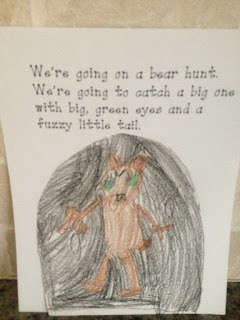1st Explain that they should think about what they want to draw and plan how they are going to do it. Suggest they close their eyes and get a picture in their brain.
2nd Remind them to add details. Just like we add words to sentences to make them more meaningful, the more details you add to your drawings the more interesting they will be.
3rd An easy rule for children to follow is to ask them to use as many colors as they are in age. If you are five, you should use at least five colors in your picture. If you are six use at least six colors, and so forth. And, of course, “fill in the page” is always a challenge.
Hint! One teacher said she discovered that when she gave her students colored paper they were more likely to fill in the page. (Give it a try and let me know what you think.)
4th Compare and contrast illustrations. Show children several books with different illustrations. What media did the different illustrators use to make their pictures? Which illustrations do they like best? Why?
*Remind your students that they are illustrators, too!
How many different ways can you think of to use common materials like crayons or colored pencils in your classroom?
Skills - Instead of giving children worksheets, give them blank paper and challenge them to illustrate sight words, phonics, shapes, numbers, vocabulary, etc.
Comprehension - Draw what you learned from a science or social studies lesson.
SEL - Let children draw how they feel or express themselves on paper when upset.
Songs - Encourage children to illustrate favorite classroom songs and chants and then put them together to make a book.
Cards and Letters - Write and illustrate cards and letters to friends and family members.
Bulletin Boards - Use children's original work to decorate your bulletin boards, door, hallway, and so forth.






